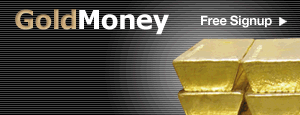

Posted 01 Dec 2008
 The COMEX Open Interest has been drying up. As noted in a COMEX update the October contract delivery was 11,554 contracts. December 1 is the second day for December delivery demand notifications with 11,166 contracts demanded. As calculated by Meltdown2011 this represents about 40% of the warehouse inventory.
The COMEX Open Interest has been drying up. As noted in a COMEX update the October contract delivery was 11,554 contracts. December 1 is the second day for December delivery demand notifications with 11,166 contracts demanded. As calculated by Meltdown2011 this represents about 40% of the warehouse inventory.
The Open Interest reached a peak near January when the credit crisis was first evidenced to the mainstream via failures in the Auction Rate Securities market.
That peak was about 600,000 contracts in gold. Since then the Open Interest has fallen to about 276,000 contracts. This decline in open interest leaves buyers with lots of 'dry powder' to make purchases. But it may represent other workings.
The declining Open Interest could represent a distrust of the COMEX. Another probable component is de-leveraging by investors or hedge funds. Counter-party risk could be increasing the probability of a 'failure to deliver' event. Or the gold price suppression scheme of central banks and their agents as revealed by GATA and primarily accomplished through the COMEX could result in gold traders increasingly boycotting the exchange. Whatever the cause the fruit appears to be less participants and less volume in the COMEX market.
 Less participants and less volume in a market has several undesirable effects. First, the price discovery mechanism is less representative of true supply and demand fundamentals.
Less participants and less volume in a market has several undesirable effects. First, the price discovery mechanism is less representative of true supply and demand fundamentals.
For example, the 'price' of an orange based on the value and utility derived from it by market participants is better represented in aggregate when there are 1,000 orange transactions instead of 200 orange transactions.
 Second, with less participants and lower volume it takes less intervention to move the price. For extremely large entities the price of oranges is much easier to manipulate in the 200 transaction market than in the 1,000 transaction market. Third, greater volatility. With only 200 transactions instead of 1,000 there is usually a greater variance in price because of the different calculations of value and utility of the individual actors. The increased volatility warns of instability in the financial and monetary system. It sounds a warning and provides a compelling reason to own gold as insurance.
Second, with less participants and lower volume it takes less intervention to move the price. For extremely large entities the price of oranges is much easier to manipulate in the 200 transaction market than in the 1,000 transaction market. Third, greater volatility. With only 200 transactions instead of 1,000 there is usually a greater variance in price because of the different calculations of value and utility of the individual actors. The increased volatility warns of instability in the financial and monetary system. It sounds a warning and provides a compelling reason to own gold as insurance.
 With regard to the dollar gold price get ready for a ride. It will be bouncing around like Tigger on a pogo stick. As the system continues to unravel there will be more days where gold fluctuates $100 an ounce in a 24 hour period.
With regard to the dollar gold price get ready for a ride. It will be bouncing around like Tigger on a pogo stick. As the system continues to unravel there will be more days where gold fluctuates $100 an ounce in a 24 hour period.
The gold market is one of the smallest relative to the amount of fiat currency but at the same time is manipulated by the largest players; governments, central banks and their agents. The way to deal with such competitors is to slowly press the advance by accumulating physical metal on a regular and consistent basis.
For example, the website for the bullion dealer I purchase from has gone down and they have still sold over 200,000 Silver American Eagles in the last 24 hours. Demand is almost insatiable.
 Gold is not subject to counter-party risk.
Gold is not subject to counter-party risk.
With payment mechanisms like GoldMoney where gold can circulate in ordinary daily transactions a viable alternative poses a mortal threat to the paper currency franchises of governments and central banks. As the current system continues evaporating it is wise to have some physical bullion hoarded as an insurance.
Ounces will always have purchasing power. In the current environment despite a decrease in its dollar price gold has actually increased its purchasing power of the DOW, real estate and commodities such as sugar, cattle, oil, etc. The same cannot be said of fiat currency which has no intrinsic value.
A massive devaluation is in process for fiat currencies. It will continue to intensify and gold is the primary protection and insurance for your purchasing power.